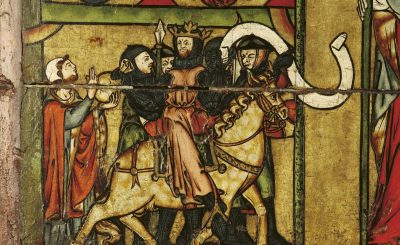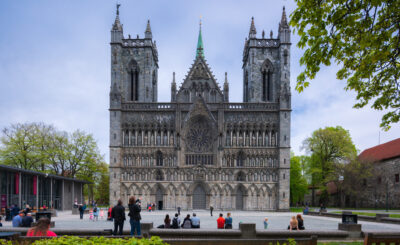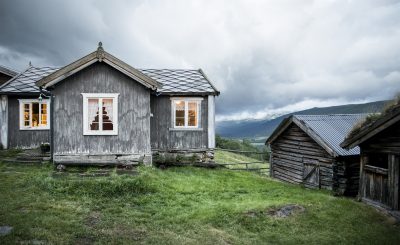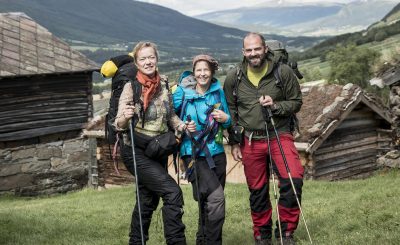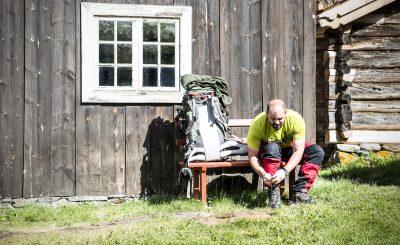Gudbrandsdalsleden
Oslo – Gjøvik/Hamar – TrondheimAn experience of a lifetime
Gudbrandsdalsleden takes you from the capital of Norway, Oslo, to the pilgrimage town of Trondheim. It is a 643 km long, well-marked pilgrim path. You will pass through beautiful cultural landscapes and lush forests, and hike across the vast Dovrefjell mountain plateau. Finally, you will reach your destination, Nidaros Cathedral - St. Olav's burial place. Gudbrandsdalsleden is the most popular pilgrim paht in Norway, and the walk is said to be the experience of a lifetime.
It is recommended to walk the Gudbrandsdalsleden trail in the summer between 1st June and 1st September to avoid snow and meltwater. The accommodations may be closed off-season. On the Dovrefjell mountain range, the snow can last for longer, therefore you should not cross Dovrefjell by foot before June 10th (take the train instead). This is also to avoid disturbing the wild reindeer during calving.
If you have questions about local weather conditions and availability, you can contact the regional pilgrim center in the area where you plan to walk.
The legacy of St. Olav
There are hundreds of cultural heritage places along the path. You will see ancient burial sites, historically significant locations, beautiful churches, and preserved buildings from the Middle Ages. You might even have the chance to stay in a building that once housed pilgrims as far back as the 1300's at Sygard Grytting.
Gudbrandsdalsleden brings you close to the legacy of the Viking king Olav Haraldsson, later known as Saint Olav. Water springs named after St. Olav are widespread, and they are known to have healing effects. Along Gudbrandsdalsleden you'll also find the historical sites St. Hallvard Cathedral, Bønsnes, Granavollen, Hamardomen and Dale-Gudbrands Gard.
Learn more about the tradition of going on a pilgrimage here.
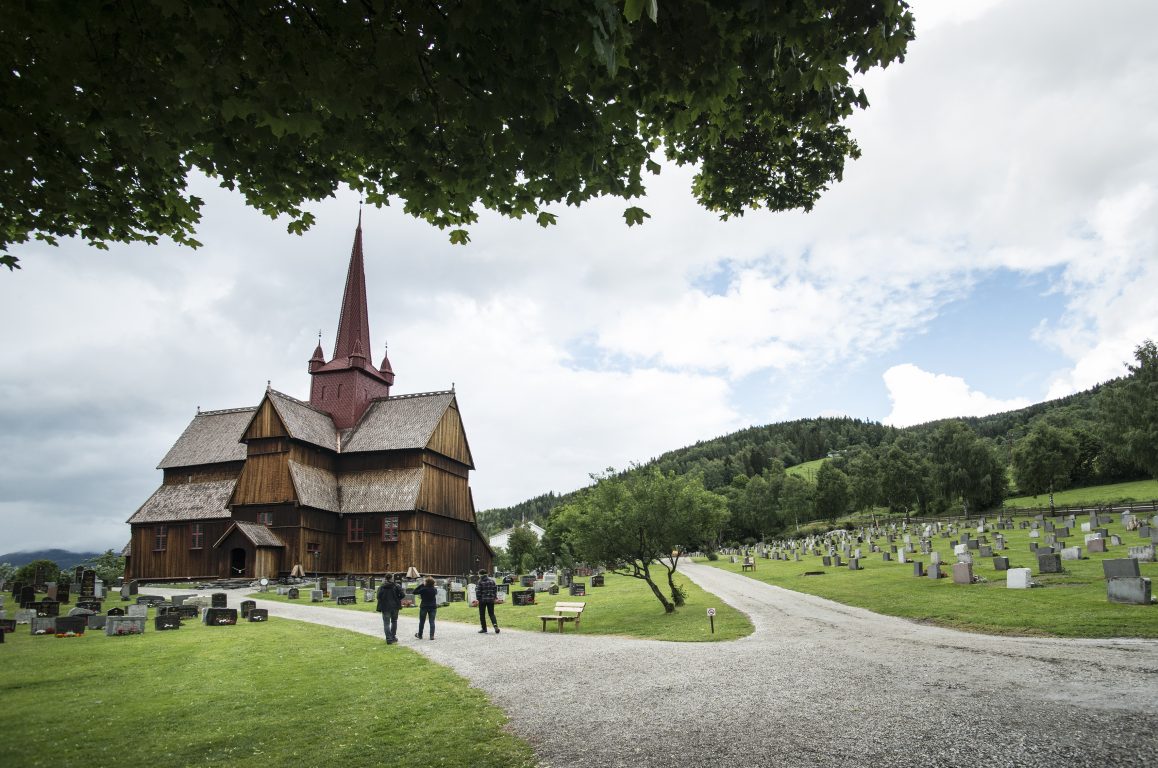
How to do a pilgrimage on Gudbrandsdalsleden?
If you have the opportunity, it is recommended to walk the entire path from Oslo to Trondheim. Walking on average 20 kilometres per day, you will spend around 4-5 weeks on your pilgrimage. On a long distansce walk like this you really get to enjoy the surroundings, and you'll only need to focus on where to walk, eat and sleep.
You can also walk for a few days or a week at a time—take a look at our recommended walks. There is a train line along almost the entire Gudbrandsdalsleden, making it easy to reach different starting points.

Should you choose the western or eastern route?
Gudbrandsdalsleden starts in Oslo, at the ruins of the St. Hallvard Cathedral. Shortly after the starting point, the trail splits into a western and an eastern route, each following one side of Lake Mjøsa, before they converge again in Lillehammer.
The choise is yours: Do you want to take the western route out of Oslo, through the forest called Krokskogen, then trough the beautiful Hadeland region on the western side of Lake Mjøsa?
Or the eastern route through Groruddalen, crossing Skedsmo toward historic Eidsvoll and the agricultural Stange region on the eastern side of Lake Mjøsa? Both options are equally lovely and cover approximately the same distance between Oslo and Lillehammer.
If you take the western route you can visit the area where St. Olav grew up, Bønsnes, and the sister churches of Granavollen. If you would like more information on the western route we recommend you to contact Granavollen Pilgrim Center or Oslo Pilgrim Center.
If you take the eastern route you will experience forests and agricultural landscape on the way to Tangen and Stange Vestbygd, as well as the church ruins of Hamardomen in the city Hamar. Hamar was the bishop's seat and the only inland town in medieval Norway, and an obvious stop for pilgrims. If you would like more information on the eastern route we recommend you to contact Hamar Pilgrim Center or Oslo Pilgrim Center.
It is also possible to combine an experience from both routes by going from Granavollen to Kapp or Gjøvik and then take Skibladner, the world's oldest active steamboat, over to Hamar. You can also travel with Skibladner on the eastern route, from Eidsvoll to Hamar or Lillehammer.
At Lillehammer, the western and eastern route meet and the path enter the valley of Gudbrand - Gudbrandsdalen. The valley has a varied landscape which ranges from lush forests to small pleasant villages. Here you will experience tranquillity, wildlife and culinary experiences based on local traditional food.
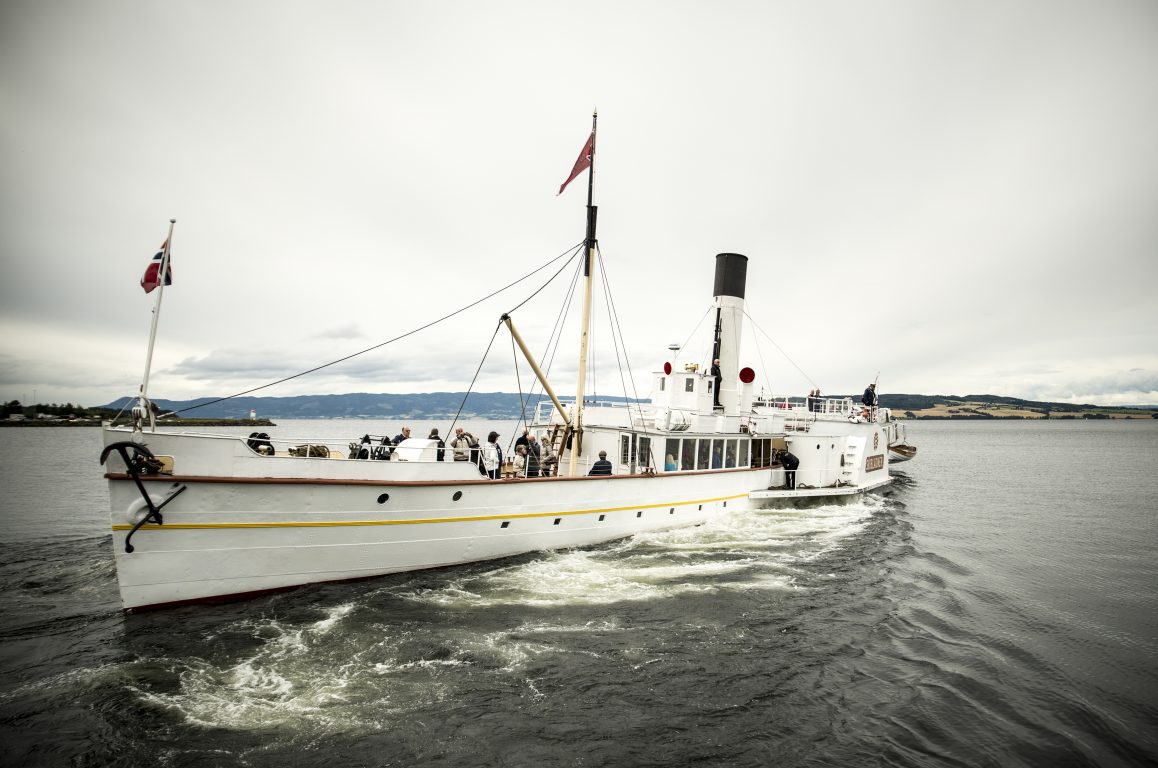
Across the mountain range
The journey continues up to the Dovrefjell mountain range, reaching the trail's highest point at approximately 1300 meters above sea level. At Dovre mountain you will find traces of king roads, fishing grounds and thousand year old shelters. You’ll find the Eystein church, which is an important place to visit for many pilgrims.
The trek across the mountains require careful planning to ensure a safe journey.
Don't set off too early.
The route over Dovrefjell Mountain is "technically closed" until June 10th, which means it lacks infrastructure, hostels might be closed and the markings might be hidden by snow. Bridges over the rivers "Hondyrju" and "Vesle Hondyrju" will not be laid out before approximately June 10th. The rivers are ice cold with meltwater, and cannot be waded across.
We strongly advise against walking across the Dovre mountain before 10th June, it is not passable because of deep snow and subzero temperatures, usually well into June.
Before you set off, check if the winter snow has melted and if the accommodations are open. If not, you should take the train across this area instead. Dovrefjell Pilgrim Center can provide you with guidance. Even after the snow has melted, you must be prepared for sudden weather changes, with temperatures dropping to near zero degrees Celcius, even in the middle of summer. Always check the weather forecast on www.yr.no before crossing the mountains, and be sure to bring sufficient clothes, including gloves and a hat.
Wild reindeer.
Two of the stretches across Dovre mountain coincide with calving areas for wild reindeer. The reindeer is very vulnerable, and a European responsibility species. By scaring the wild reindeer, we deprive them of time that should have been spent on vital grazing and rest, and this is particulary important in the calving period. We generally encourage you not to walk the Pilegrimsleden over Dovrefjell before the calving period is over in mid-June.
The pilgrim destination
After the high mountain plateau, you'll enter Trøndelag with its forested landscapes. Passing through the woods of Trøndelag, interspersed with some open stretches and river crossings, you'll arrive in the city of Trondheim. Awaiting you here is the Nidaros Cathedral, the burial church of St. Olav and the destination of your pilgrimage.
Outside the western facade of the cathedral, you'll find the last mile stone engraved with the pilgrim symbol. Nearby, you'll also find the pilegrim reception. Here, you can get the Olav Letter if you have walked at least the last 100 kilometers to Trondheim, and documented it with stamps in a pilgrim passport.
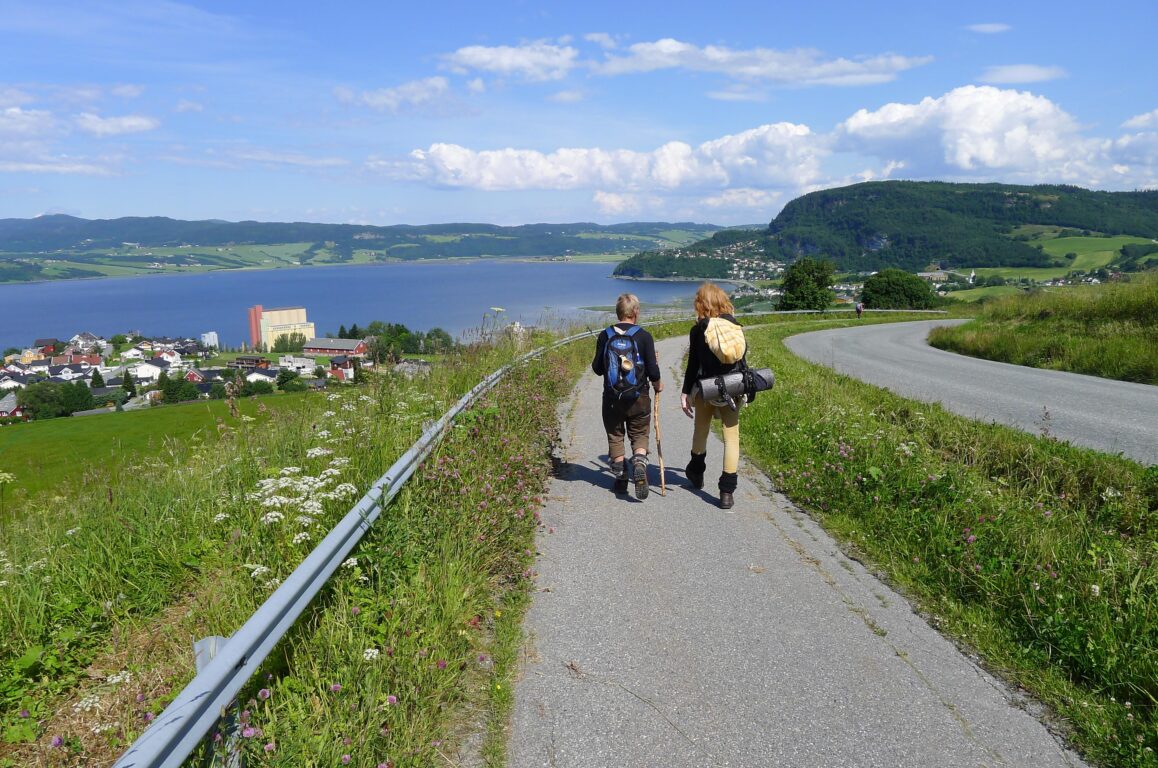
Along Gudbrandsdalsleden there are six regional pilgrimage centers you can visit on your pilgrimage or contact in advance. They offer guidance and information. The centers are located in Oslo, Gran (Hadeland), Hamar, Hundorp (Gudbrandsdalen), Dovre mountain and Trondheim. Here you can see the locations on the map. The centers are regional, but have general knowledge on the whole Gudbrandsdalsleden trail.
Oslo Pilgrim Center can help you if you are starting your pilgrimage in Oslo.
Hamar Pilgrim Center offer guidance and information about the Hamar region.
Granavollen Pilgrim Center offer guidance and information about the Hadeland region.
Dale-Gudbrand Pilgrim Center offer guidance and information about the Gudbrandsdalen region.
Dovrefjell Pilgrim Center offer guidance and information about the Dovrefjell mountain range and Trøndelag region.
Trondheim Pilgrim Center offer guidance and information about the Trondheim region.
Where do I buy the pilgrim passport?
You can buy the pilgrim passport at several places along Gudbrandsdalsleden, check our overview here. You can collect stamps in the passport at some of the churches and attractions along the way.
When should I walk?
The main season for pilgrimage walking in Norway is during the summer, from 1st June to 1st September. Walking outside the main season is possible but not recommended, as it can be cold with more unstable weather, and many of the accommodation options are closed.
In areas where you need to cross mountains, the season is shorter due to snow and snowmelt. Contact the regional pilgrim center for the area you plan to walk through to check whether the conditions are safe.
How long does it take to walk the entire Gudbrandsdalsleden?
Pilgrims walk on average 20 km per day, and it can take up to 32 days to walk from Oslo to Trondheim. We recommend planning enough time to also be able to take rest days if necessary.
Can I order luggage transport?
Along Gudbrandsdalsleden (from Hadeland (west) or Tangen (east), all the way to Trondheim) you can easily order luggage transfer between the accommodations. See detailed information here.
How is the level of accommodation?
The level of accommodation varies from simple self-catering cottages, to pilgrim hostels or hotels. See overview of accommodations here.
Do you need to book accommodation in advance?
We recommend that you reserve a place at the pilgrim hostels in advance. The accommodations along the Gudbrandsdalsleden are usually small hostels with few beds. For that reason, it is advisable to secure a bed a few days before arriving. You can find a list of accommodations here.
How is the terrain on Gudbrandsdalsleden?
Gudbrandsdalsleden is long and therefore very varied. You will hike in both fields and on asphalt, up steep slopes and through moors and meadows. The weather will make the grass wet and the tarmac warm. Be prepared for a varied hike. Read more about how to prepare and choose the right equipment for your pilgrimage.
Which footwear should I choose?
We recommend hiking boots with good cushioning and durability. Some pilgrims choose mountain boots, some choose Gore-Tex, and some choose technical running shoes or sandals. Choice of shoes is individual and depends a bit on which stages you choose to go and what surface you’ll walk on.
Is the Gudbrandsdalsleden well marked?
Gudbrandsdalsleden is well marked from Oslo to Trondheim. Still, we recommend that you bring with you a map and compass for safety reasons.
I've packed too much and the bag is too heavy to carry, what do I do?
Send excess content by mail. See how to do it here.
Can there be snow on Dovrefjell Mountain range?
There may be snow in the mountains, often until mid-June. If there is still snow on Dovrefjell mountain range we strongly advice against crossing it by foot, take the train instead. Some accommodations remain closed as long as there's snow. Check the weather conditions before you start the crossing, for example at www.yr.no, and be aware that bad weather and temperatures near zero degrees can occur, even during the pilgrimage season from June to September. Contact Pilgrim Center Dovrefjell for advice and tips.
Is it safe to walk the Gudbrandsdalsleden alone?
It is safe to walk alone as the path is well marked and in most parts goes through agricultural landscapes and small towns from Oslo to Trondheim. About 20% of pilgrims walking the Gudbrandsdalsleden actually prefer to walk alone.
Are the churches open?
Along Gudbrandsdalsleden there are many beautiful churches, but unfortunately not all churches are open. If you meet a closed door, check if there is information available which might say something about pilgrim offerings. Many congregations open the churches outside opening hours for pilgrims by request.
Can I do a pilgrimage with my dog?
It is quite possible to do a pilgrimage with your dog, but there are some things to keep in mind. It is strongly recommended to keep your dog on a leash at all times as you go through a lot of pasture where you can meet pasture animals. By law, dogs should be on a leash from April to August, in some places it is extended.
In some areas the dog must also be able to climb stairs that have been set up to help cross fences. If not, the dog must be lifted over. For accommodation with a dog in the room this must be agreed with the owners.
On Facebook you will find the group "Hiking along Gudbrandsdalsleden", where experienced pilgrims, hosts and enthusiasts help you with answers to your questions.
You can find the group here: Hiking along Gudbrandsdalsleden | Facebook
The best way to find information about all accommodations along the Gudbrandsdalsleden is on the digital map here at pilegrimsleden.no.
But we have also listed all the accommodations with minimum information in a separate downloadable document.
Are there guidebooks for Gudbrandsdalsleden? Yes, there are Norwegian, German, English and Dutch guidebooks.
Please note that we cannot guarantee updated information in guidebooks, these may be out of date. You can find updated information on the digital map at here at pilegrimsleden.no
Norwegian:
Pilegrimsleden fra Oslo til Trondheim - en praktisk guide til vandringen. Voll, Bjørn Ivar A. and Gilbert, Ellen Rykkja. 2023. Imprint publisher. (To order the book from the authors, click here.)
German:
Norwegen: Olavsweg. Outdoor. Fürtig, Hanna og Hennemann, Michael. 2024. Conrad Stein Verlag. (To order, click here)
Olavsweg - Von Oslo über Mjøsasee und Dovrefjell nach Trondheim by Susanne und Walter Elsner, Bergverlag Rother (2023). You can get it at Rother publisher or Oslo Pilgrim Center.
This is the newest ones, but there are several books in German. Please go to amazon.de and search for Olavsweg, and pick the guidbook to your liking. A great coffe table book to read in advance or after your pilgrimage is "Nach Nidaros…", Olaf Deppe (2018) (To order the book click here)
English:
Hiking guide Gudbrandsdalsleden. Warmerdam, Ria. 2024. (To order click here)
Cycling guide Gudbrandsdalsleden. van Veen, Gea. 2024. Via Gaia. (To order click here).
At amazon.co.uk, you can search for St. Olav Ways and Nidaros, then you'll get some alternatives to choose from.
Dutch:
The Olav Road. Warmerdam, Ria. 2015. (To order the book click here)
Route suggestions along Gudbrandsdalsleden
[[ notice ]]
We found no trail suggestions.
Try to filter on something else.
